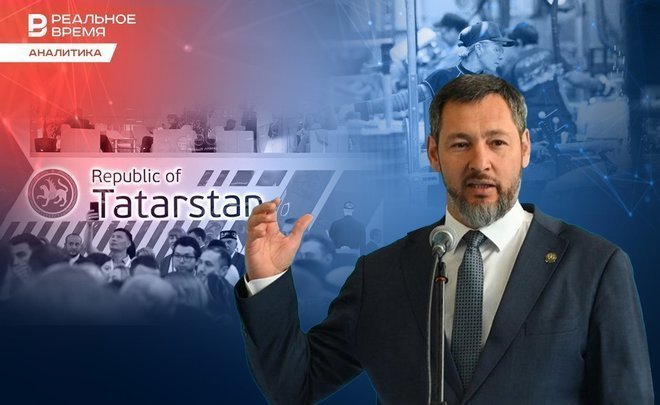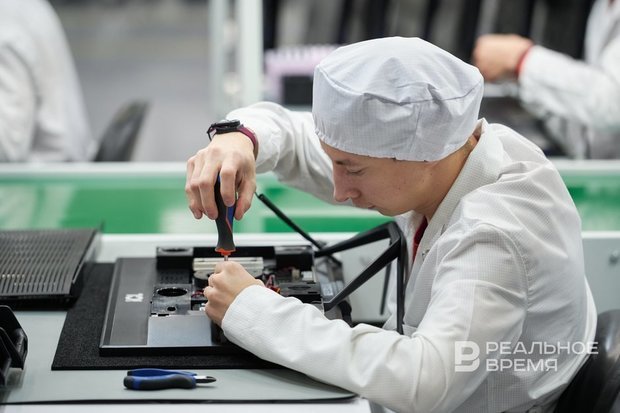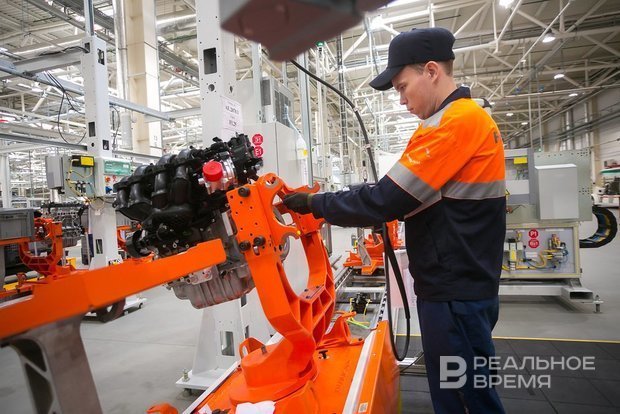Tatarstan’s industry develop poorly
What factors influenced the growth of production and which industries dragged it down

The results of industrial development in Tatarstan in 2023 may be weaker than in 2022. Last year, industrial production increased by 4.6%, and in 10 months of this year — by only 3%. At the same time, the dynamics of industrial development began to slow down since the summer, which may be due to an acute shortage of labour resources in the country and a sharp increase in the key rate by the Bank of Russia. What are the results of Tatarstan's industry of the year, which industries were actively growing, and where there was a drawdown — in the review of the analytical service of Realnoe Vremya.
Manufacturing grew while oil production stagnated
In 10 months of 2023, according to Tatarstan Statistics, industrial production in the republic increased by 3% compared to the same period last year. These are weaker results than in Russia as a whole, where production has increased by 3.5%.
The pace of industrial development has been slowing down since August, and an increase in the key rate by the Bank of Russia has contributed to this trend — loans have become more expensive, enterprises have begun to reduce investment activity, and a serious shortage of personnel in the labour market is also affecting the situation. Unemployment in Tatarstan is currently at an all-time low.
In January-October, Tatarstan shipped goods worth 3.8 trillion rubles, of which 2.7 trillion rubles are manufacturing industries. The dynamics of the development of manufacturing industries in the republic as a whole is higher than the general index of industrial production — 5.1%.
The strongest growth was in the production of computers (+43.6%), electrical equipment (+38.4%), furniture (+25.5%), motor vehicles and trailers (+19.5%), metallurgical production (+14.7%), production of mineral products (+10.3%), finished metal products (+7.7%), clothing (+6.7%), food (+5.8%) and coke and petroleum products (+3.4%).
Mining in 2023, due to sanctions that intensified at the beginning of the year, stagnated — the industrial production index was only 100.1%.
In 2023, wood processing and production of wood products (-15%), paper production (-15%), chemicals and products (-7.2%), machinery and equipment (-6%), other vehicles (-4.6%), leather (-2.3%) and textiles (-1%) have decreased.
Of the most important types of products, the largest growth in 2023 is shown by the production of concrete (+22.2%), trucks (+14.3%), gasoline (+12.2%), building blocks (+4.5%), electricity (+3.4%) and diesel fuel (2.4%).
The production of toilet paper (-16.8%), medicines (-14.1%), shoes (-9.3%), pasta and flour products (-7.8%), plastics (5.5%), bricks (-3.5%) and beer (-2.2%) have fallen.
Budget expenditures are main drivers of growth
“According to Rosstat, industrial production in Russia increased by 3.5% in the first 10 months of 2023. This growth was supported by strong results from the manufacturing industry (+7.4%), while mining decreased by 1.1%," commented Olga Belenkaya, the head of the Macroeconomic Analysis Department at Finam.
In the manufacturing industry, budget expenditures and partly import substitution became the main drivers of growth. The decline in mining may be due to a reduction in gas exports to Europe and government decisions to reduce oil production and exports in order to stabilise supply and demand in the oil market.
Industrial production growth in Russia also slowed slightly in October and amounted to 5.3% against 5.6% in September. Compared to the previous month, taking into account the seasonal and calendar factors, industrial production decreased by 0.4%, Belenkaya noted.

As Rosstat notes, “in the manufacturing industries, the number of managers is increasing, noting staff shortages as one of the main reasons hindering the implementation of production plans”.
Another factor in the slowdown in industrial production is the dynamics of budget expenditures, which, after a rapid increase at the beginning of the year, became more restrained. The negative impact of the increase in the key rate is likely to manifest itself only in 2024, predicts Olga Belenkaya.
The weak ruble did not save the industry either. “A weak ruble may provide some support for exports, but sanctions have a negative impact on export-oriented industries. At the same time, industries competing with imports could benefit, but this does not happen, since in the process of import substitution it is necessary to use imported equipment and components, and they also become more expensive with a weak ruble," she explains.
Within the manufacturing industry, in the 10 months of 2023, the areas associated with the state defense order are leading by a large margin in terms of growth rates: the production of computers and peripherals, optical and electronic products (+34.1%), the production of other vehicles (+30.8%), finished metal products (+30.6%) and the manufacture of electrical equipment (+22.6%).

However, such products do not meet the growing consumer demand, which leads to an increased imbalance between demand and market supply of goods in the domestic market, increasing demand for imports and contributing to the weakening of the ruble and accelerating inflation, the expert notes.
The exception, perhaps, is the strong growth in furniture production due to the trend towards import substitution and the rapid growth of mortgages (+24.1%). The recovery growth continues in the automotive industry (+9% in 10 months of 2023 and +41% (YoY) in October).
Among the industries where output decreased in January-October, one can note the production of tobacco products (-4.9%), extraction of non-metallic minerals (-4.8%), production of paper and paper products (-2.4%), extraction of metal ores (-2.0%), manufacture of medicines and materials used in medical activities (-1.7%).
By the end of the year, industrial production growth in Russia is expected to be close to 3.5%, which should be slightly better than in 2022 (+0.6%), Olga Belenkaya forecasts.
Dmitry Orekhov, the managing director of the NKR rating agency, notes that the growth in the volume of shipped products in Russia in monetary terms for 10 months of 2023 amounted to 5.5% compared to the same period in 2022. The main volume of growth was achieved due to an increase in volumes in the manufacturing industries (an increase in this sector amounted to +8.75%) and in the provision of electricity (+12%), he commented. Mining and water supply in the volumes of shipped goods did not change during the specified period.

Russian industry has simply been “developing” longer
“Last year, the industry of the republic showed stronger results than in Russia as a whole, this year it received a worse result than the nationwide. This may indicate that our republican industry increased its pace faster after the start of the military operation and the lifting of Covid-19 restrictions, gave a good leap last year, and naturally, against the background of that it was already quite loaded with orders, it was much more difficult for it to grow further," explains Igor Koch, Doctor of Economics, Professor of the KFU .
In general, the industry in Russia has been developing longer, and the main run-up occurred in 2023. Therefore, the expert suggests not to consider the results of 2023 as negative or disastrous.

The faster the industry grows, the more difficult it is for it to grow further, and it is easier to develop from scratch. “The potential for the development of Tatarstan's industry remains, because many industrial projects that were launched last year and this year will begin to produce results in 2024-2025," he says. “There is a certain groundwork for further growth. New production facilities continue to be created, and investments in industry are coming. It is necessary to saturate the domestic market with industrial products, and import substitution also needs to be developed.”
“The high rates that we are currently seeing in the lending market are holding back the growth of the industry, but experts hope that rates will decrease next year. This will slightly ease the pressure of credit unavailability," Koch predicts.

A more difficult problem, according to him, is the technological dependence of industrial enterprises on Western equipment, components, materials and software. “Somewhere we will have to replace it all with other technologies and materials that are available, but perhaps, not the best samples, somewhere we will have to stop using something. Additional problems may arise here, which are being solved, but not quickly," he warns.
However, Igor Koch hopes that in 2024 the republic will show results comparable to the results of this year.